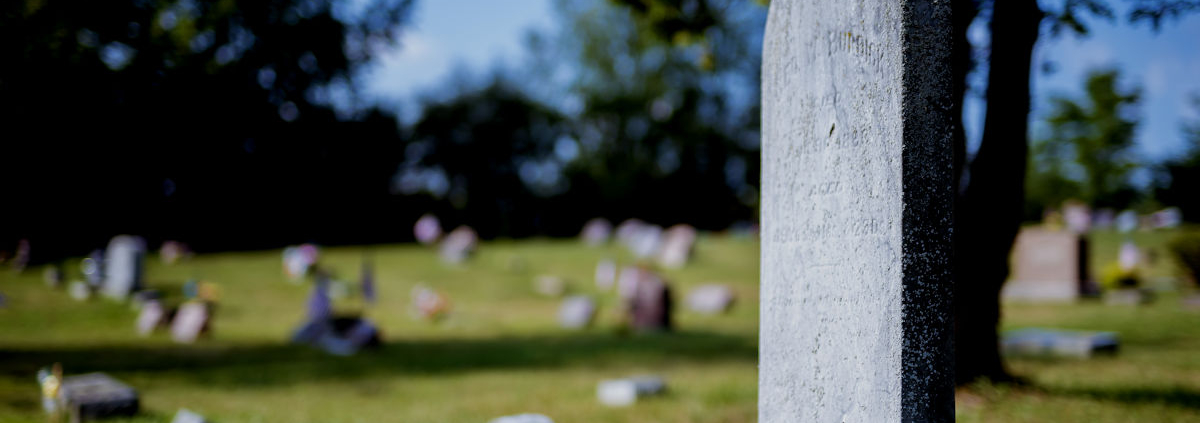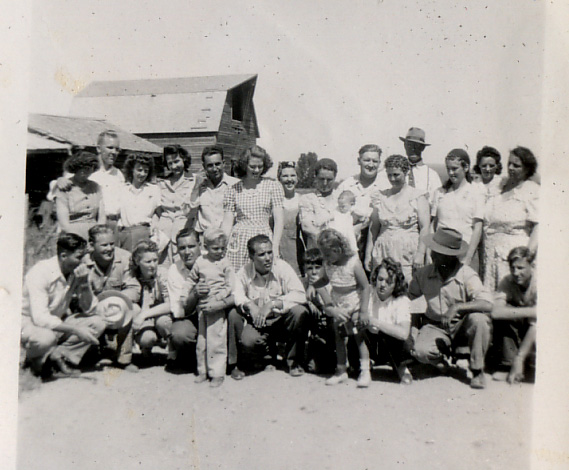Family in the Cemetery
The passing of Maureen Westover this month came as a sudden shock, as sometimes can happen.
This past week her funeral was held as family from all over the country gathered together physically and virtually to celebrate her life. There an incredible story was told.
Her story is not over. And another story is emerging that I believe is of great significance and huge value to anyone calling themselves family – especially for Maureen’s children and grandchildren.
As I write this there are seven vehicles carrying a large number of those so important to Maureen from California to Idaho for her burial.
Maureen is a native Californian with roots in the Bay Area. There she and Gale raised their children. For them, California has been the scene of so much life and family history.
But Rexburg is where Maureen, and I assume that someday, Gale, will rest.
I’m sure that was not the original plan. I’m certain the strange politics and expense of California has something to do with it.
Those details aside, I see the coming of a new story to the cemetery in Rexburg as a continuation of an old story. I pray the real significance of this is not lost of those of Maureen’s children and grandchildren left behind.
I hope they all come to understand that this is actually a blessing and, I believe, an answer to prayers given by one of our grandfathers many, many years ago.
The Rexburg cemetery resides on land that once belonged to family members. I believe we have shared this story before but I will recount it here again briefly.
A man by the name of Walter Paul came to Utah with his father, who was a rather well-known furniture maker. Walter and his brothers all learned that trade and when Walter married and started raising a family with his first wife he moved to Logan, Utah where he opened a furniture store.
Years later, after many children were born to him and his wife and after his furniture business had prospered, Walter’s wife suddenly passed away. Given that they had many children and several of them were quite young, Walter needed to remarry and he chose a young bride by the name of Emma Westover, of Mendon, Utah.
Emma was actually close in age to one of Walter’s oldest daughters and they were, in fact, good friends. But Emma was not a plural wife.
It was their intent to have children of their own – and to build a new life. Before long, Walter was asked to join a group of local men in Cache Valley who were assigned to settle the Rexburg area.
Walter opened a new store in the frontier town of Rexburg and, in fact, took on many roles within the community. He was a constable, very active in church leadership, a frequent host and producer of local plays in the theater and a justice of the peace. He was, conveniently, also the town undertaker and the primary source of caskets.
Walter and Emma, like everyone else in Rexburg in the 1880s staked a claim under the Homestead Act. This famous legislation provided them with at least 40 acres for free if they developed it and made it productive within five years.
This was a daunting task for Walter because building a house and managing a farm was a lot of work on top of all his other duties.
In fact, he decided he couldn’t do it and would “quarter” his claim. That meant dividing his property into four equal parts and having others develop the land for him. This was evidently a common practice, especially for men in Walter’s kind of situation.
One quarter of the land went to a local that Walter wanted to help. Another quarter went to his brother in law, our great grandfather William Westover, father to Arnold who was the father of Darrell – Grandpa to Gale and Maureen’s children.
William’s story is one we should all get to know.
The opportunity for him and his young bride, Ruth, in the 1880s to get some land that could be their own to raise a family on was significant to William. He wanted something lasting that he could give to his children. That was something his father could not do for him and something his father had never had himself.
So, William and Ruth went to work and it was brutally hard. Harsh winters, dry summers and the swampland that became the Westover Ranch was not an easy project to develop. Their poverty was severe.
As their children were born and they fought the challenges and disease of the time, they also had to contend with a struggling local economy that was devasted by a lingering depression during the 1890s.
That same depression devastated the finances of Walter and Emma Paul.
They went into bankruptcy and it was complicated.
Sadly, the finances of Walter Paul directly affected the hopes of William and Ruth and they stood to lose all they had invested and could do nothing about it.
But Walter was an influential man who could see no good in everyone losing everything in Rexburg and having to walk away.
With others, he worked with federal regulators to not only save the land but the entire community that was on the brink of becoming a ghost town.
In the end one of Walter’s quarters would be “donated” to become the community cemetery.
William and Ruth could claim the land they had already been working for years and could press forward by starting over – and agreeing to a payment arrangement.
When this arrangement was made there was no way William Westover could know that he was sick with a cancer that would prematurely take his life.
But when he found out, he re-doubled his efforts to make the farm produce and to pay it off before he passed.
He barely made it.
Within weeks of his death he cleared the debt and secured the land for his family – all that he could leave for his children and grandchildren. He was only 42.
Those children of William and Ruth, as well as the generation of their grandchildren, never had an easy life in Rexburg.
But it was home to them. It was precious. It reflected the dying wish of a father and grandfather who wanted permanence of his family for generations.
The Westover Ranch has a difficult and interesting story. Very few of us of my generation and beyond have the connection that our grandparents have to the place.
But it has survived thanks to their vision.
Now the cemetery will begin to see new generations laid to rest there.
I do not see Maureen’s burial there as a thing of necessity. I see it as a miracle of connection. I believe it begins a new tradition of coming home that perhaps is something our grandparents never considered.
I cannot help but think that William and Ruth are pleased.
This land is not what is important. The family with this land is what is important.
The Westover and Paul roots in Rexburg should be honored for their sacrifices during their years there. I can think of no better way than coming home to rest when times like this come.
As I have traveled the cemeteries where we find our grandparents and aunts and uncles and cousins it has given me great pause for where I will someday be buried.
I think in most cases folks are buried wherever it is they made their home, and that’s okay.
But to come home where home was originally built is a thing of honor and, oddly for me, something of security. It adds to the permanence Grandpa William was seeking.
I hope when Maureen is buried there that some time is taken to consider all the Westovers and Pauls already buried in that rural resting place. In the years to come when Maureen’s children and grandchildren come to visit and tell her story I pray they will look around. There are stories aplenty there to learn. Adding Maureen’s story there only enriches the heritage of the family going forward.
I hope other members of the family consider that sacred place for themselves.
They will add to an already great story, too.


